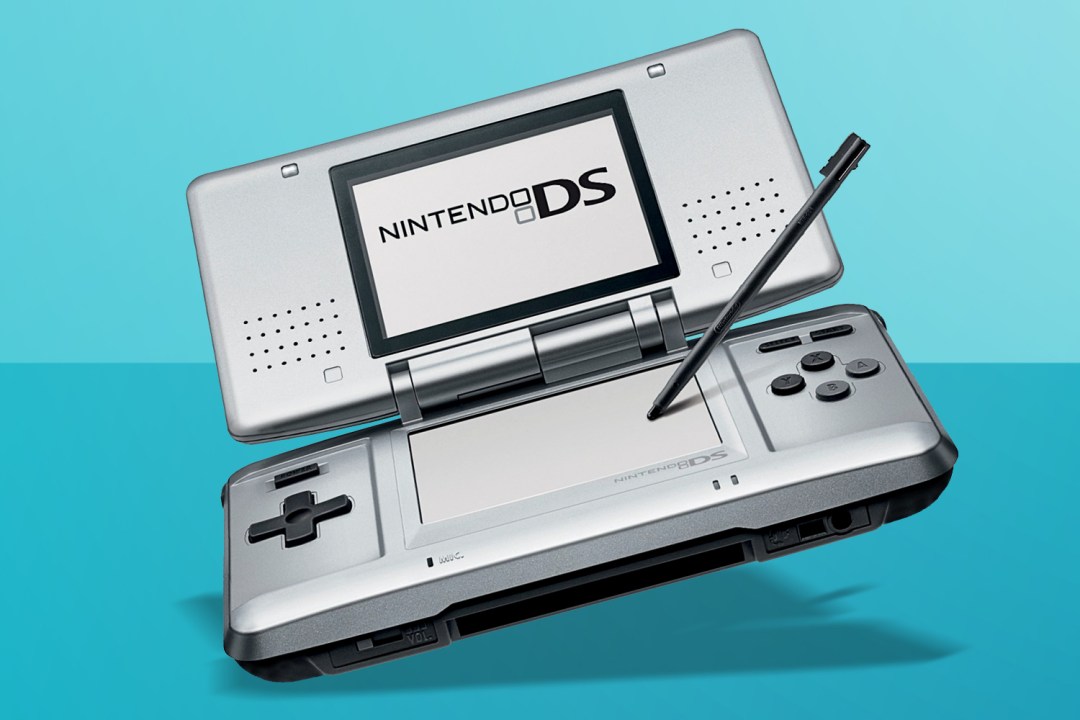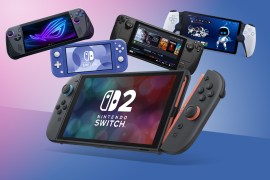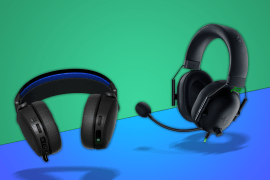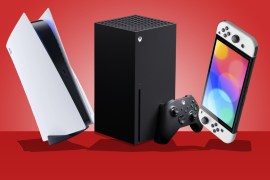20 Years of the Nintendo DS: looking back at the ace dual-screen portable
Twenty years ago, Nintendo launched its dual-screen handheld, the DS. We dust off the system and root around for the stylus in the back of the sofa to examine how this little gaming gem became one of the best-selling systems ever.

Back in 2003, things were looking far from rosy for Nintendo. Though the Game Boy Advance was selling fairly well, its flagship home console, the Gamecube, was failing to set the world alight despite having a cult following and a clump of quality exclusives.
On top of that, major competitor Sony was dominating the home gaming market with the PlayStation 2. At the E3 2003 gaming expo, it revealed it was working on an advanced 3D handheld that could far outclass the GBA’s abilities.
The House of Mario needed a hit, and fast. Outgoing president Hiroshi Yamauchi instructed his development team to create a new handheld based on a two-screen concept inspired by the company’s previous Game and Watch LCD handhelds from the 1980s.
Under the watch of newly-crowned Nintendo president Satoru Iwata, the Nintendo DS was born, with the DS an abbreviation for “Developers’ System” or “Dual Screen.” Despite its modest appearance, the system was no slouch. It packed two 32-bit processing CPUs, two 3” TFT displays — one with a resistive touchscreen — and stereo audio baked within a clamshell design.
There were also advanced features, namely 3D graphics hardware capable of a multitude of effects, though its polygons were generally limited to a single screen. The bottom resistive screen was handy for displaying map, inventory or character status data, allowing players greater control and gameplay fluidity without needing to pause to peruse through menu screens. It was also one of the first handhelds with onboard Wi-Fi, which became a game-changer for online multiplayer bouts.
Released in Japan in November 2004, the DS was branded Nintendo’s “third pillar,” meaning it would complement the existing Gamecube and GBA systems. Less than two weeks after the DS launch, Sony released its handheld offering, the PlayStation Portable, replete with near-PS2 quality graphics and a brand new media format, the UMD.
This sudden competitor in the handheld space, which Nintendo had mostly sewn up, made the Japanese gaming giant sit up and take notice. It would have to lean into fully supporting the DS to make it a success. However, the system was already onto a winner. While Sony was aiming the PSP squarely at veteran and hardcore gamers, Nintendo was casting a much wider net.
Armed with the DS’s touchscreen and stowable stylus, new generations of players were discovering casual gaming thanks to its stylus-based, simplified gameplay that made it a doddle to pick up and play. These new mechanics birthed new franchises too, including the widely popular Phoenix Wright series, letting gamers engage in legal dustups with tense cries of “Objection!”
Nintendogs also gave this generation of casual gamers their version of Tamagotchis, with adorable virtual puppers to look after and pet. Your ma and pa could test their smarts on puzzlers such as Professor Layton and Brain Age too.
There were also plenty of spoils for Nintendo fans, with two new Zelda games, a New Super Mario Bros 2D platformer, which revitalised the side-scroller genre, and a healthy smattering of Pokémon and Dragon Quest titles. Even now, I’ll dust off my DS Lite every so often and enjoy commanding cutesy pixellated armies in Advance Wars: Dual Strike. Mario Kart 7 also utilised the DS’s Wi-Fi capabilities for free online multiplayer racing, offering practically limitless replayability.
That GBA game slot also came in handy for mixing up the gameplay. DS gamers could join the Guitar Hero bandwagon with a dedicated GH game and four-button plug-in controller, mimicking everyone’s favourite gaming guitar.
In less than 6 months of the DS’s original Japanese release, Nintendo had announced that it had flogged more than 6 million units worldwide. The gaming giant didn’t stop there either, launching the DS Lite in early 2006, a far more attractive and compact version of the slightly awkward original, doing away with its girthy love handles and silver-grey design. This was followed by the DSi in 2008 and the DSi XL in 2009, which added a camera, bigger display and faster processor.
With over 154m units shifted worldwide, the DS became Nintendo’s biggest-selling console and second-biggest-selling system of all time, narrowly being pipped to the top spot by the PS2’s 155m sold units.
The DS family was eventually replaced with the 3DS range, which featured adjustable 3D graphics without needing to wear those pesky 3D glasses.
Though Nintendo’s fully handheld systems have been retired so it can focus on the Switch‘s hydrid system, its commitment to cater to casual gamers is arguably inspired by its previous successes with the DS series.



